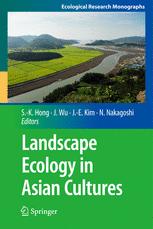

Most ebook files are in PDF format, so you can easily read them using various software such as Foxit Reader or directly on the Google Chrome browser.
Some ebook files are released by publishers in other formats such as .awz, .mobi, .epub, .fb2, etc. You may need to install specific software to read these formats on mobile/PC, such as Calibre.
Please read the tutorial at this link: https://ebookbell.com/faq
We offer FREE conversion to the popular formats you request; however, this may take some time. Therefore, right after payment, please email us, and we will try to provide the service as quickly as possible.
For some exceptional file formats or broken links (if any), please refrain from opening any disputes. Instead, email us first, and we will try to assist within a maximum of 6 hours.
EbookBell Team

4.8
104 reviewsCultural landscapes are a product of the interactions between humans and natural settings. They are landscapes and seascapes that are shaped by human history and land use. Socioeconomic processes especially, but also environmental changes and natural disturbances, are some of the forces that make up landscape dynamics. To understand and manage such complex landscapes, interdisciplinary and transdisciplinary approaches are necessary, emphasizing the integration of natural and social sciences and considering multiple landscape functions. The spatial patterns of Asian landscapes are strongly related to human activities and their impacts. Anthropogenic patterns and processes have created numerous traditional cultural landscapes throughout the region, and understanding them requires indigenous knowledge. Cultural landscape ecology from a uniquely Asian perspective is explored in this book, as are the management of landscapes and land-use policies. Human-dominated landscapes with long traditions, such as those described herein, provide useful information for all ecologists, not only in Asia, to better understand the human–environmental relationship and landscape sustainability.